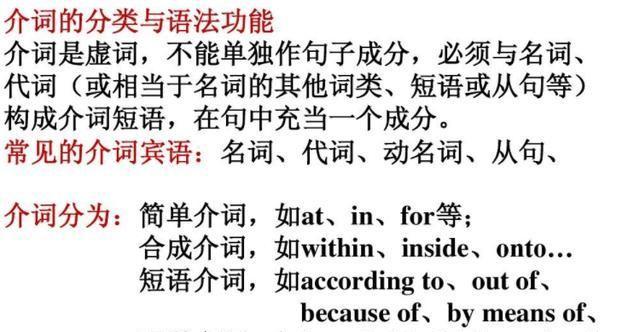在英语学习中,介词“at”,“by”,“for”,“in”和“with”后面可以跟动词ing形式,分别表示在特定时间或地点进行的动作,通过某种方式或手段进行的动作,做某事的目的或原因,以及使用某种工具或手段进行的动作。

介词“at”
介词“at”后面可以跟动词ing形式,表示在特定的时间或地点进行的动作。例如:
- I often see him jogging at the park.
- They are having a party at their house tonight.
介词“by”
介词“by”后面可以跟动词ing形式,表示通过某种方式或手段进行的动作。例如:
- I usually go to work by taking the subway.
- He made the cake by following the recipe.
介词“for”
介词“for”后面可以跟动词ing形式,表示做某事的目的或原因。例如:
- I am studying English for improving my job prospects.
- She went to the gym for losing weight.
介词“in”
介词“in”后面可以跟动词ing形式,表示在某个时间或状态进行的动作。例如:
- I am interested in learning new things.
- He is busy in preparing for the exam.
介词“with”
介词“with”后面可以跟动词ing形式,表示使用某种工具或手段进行的动作。例如:
- She is writing the report with a computer.
- He is cutting the vegetables with a knife.
